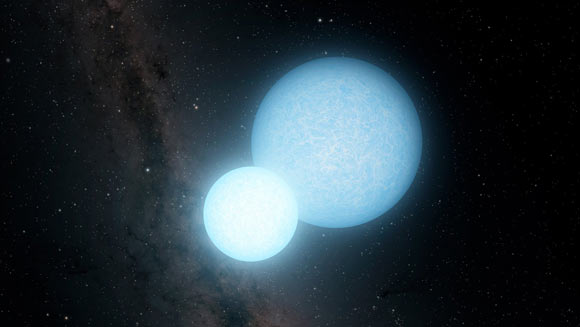Researchers have analyzed a few carbon-oxygen white dwarfs in Milky Way’s old open clusters, and their findings help shed new light on the origin of the carbon, an element essential to life on Earth.
Every carbon atom in the Universe was created by stars, through the fusion of three helium nuclei.
But astrophysicists still debate which types of stars are the primary source of the carbon in our own galaxy, the Milky Way.
Some are in favor of low-mass stars that blew off their carbon-rich envelopes by stellar winds became white dwarfs, and others place the major site of carbon’s synthesis in the winds of massive stars that eventually exploded as supernovae.
Using data from the W.M. Keck Observatory in Hawaii collected in 2018, University of Padua astronomer Paola Marigo and colleagues analyzed white dwarfs belonging to five open star clusters: NGC 752, Ruprecht 147, NGC 6121, NGC 6819, and NGC 7789.
“From the analysis of the observed Keck spectra, it was possible to measure the masses of the white dwarfs,” said co-author Professor Enrico Ramirez-Ruiz, an astronomer at the University of California – Santa Cruz.
“Using the theory of stellar evolution, we were able to trace back to the progenitor stars and derive their masses at birth.”
The relationship between the initial masses of stars and their final masses as white dwarfs is known as the initial-final mass relation, a fundamental diagnostic integrates information from the entire life cycles of stars.
The analysis of white dwarfs observed by the team gave a surprising result: the masses of these stars were notably larger than expected, putting a ‘kink’ in the initial-final mass relation for stars with initial masses in a certain range.
“Our study interprets this kink in the initial-final mass relationship as the signature of the synthesis of carbon made by low-mass stars in the Milky Way,” Dr. Marigo said.
In the last phases of their lives, stars twice as massive as our Sun produced new carbon atoms in their hot interiors, transported them to the surface, and finally spread them into the interstellar medium through gentle stellar winds.
The team’s detailed stellar models indicate that the stripping of the carbon-rich outer mantle occurred slowly enough to allow the central cores of these stars, the future white dwarfs, to grow appreciably in mass.
Analyzing the initial-final mass relation around the kink, the researchers concluded that stars bigger than 2 solar masses also contributed to the Galactic enrichment of carbon, while stars of less than 1.5 solar masses did not.
In other words, the mass of 1.5 solar masses is the minimum mass for a star to spread carbon-enriched material.
“The findings pose new, stringent constraints on how and when carbon was produced by stars of our galaxy, ending up within the raw material from which the Sun and its planetary system were formed 4.6 billion years ago,” said co-author Dr. Jeffrey Cummings, an astronomer at the Johns Hopkins University.
“One of most exciting aspects of this research is that it impacts the age of known white dwarfs, which are essential cosmic probes to understand the formation history of the Milky Way,” said co-author Dr. Pier-Emmanuel Tremblay, an astronomer at the University of Warwick.
“The initial-to-final mass relation is also what sets the lower mass limit for supernovae, the gigantic explosions seen at large distances and that are really important to understand the nature of the Universe.”








